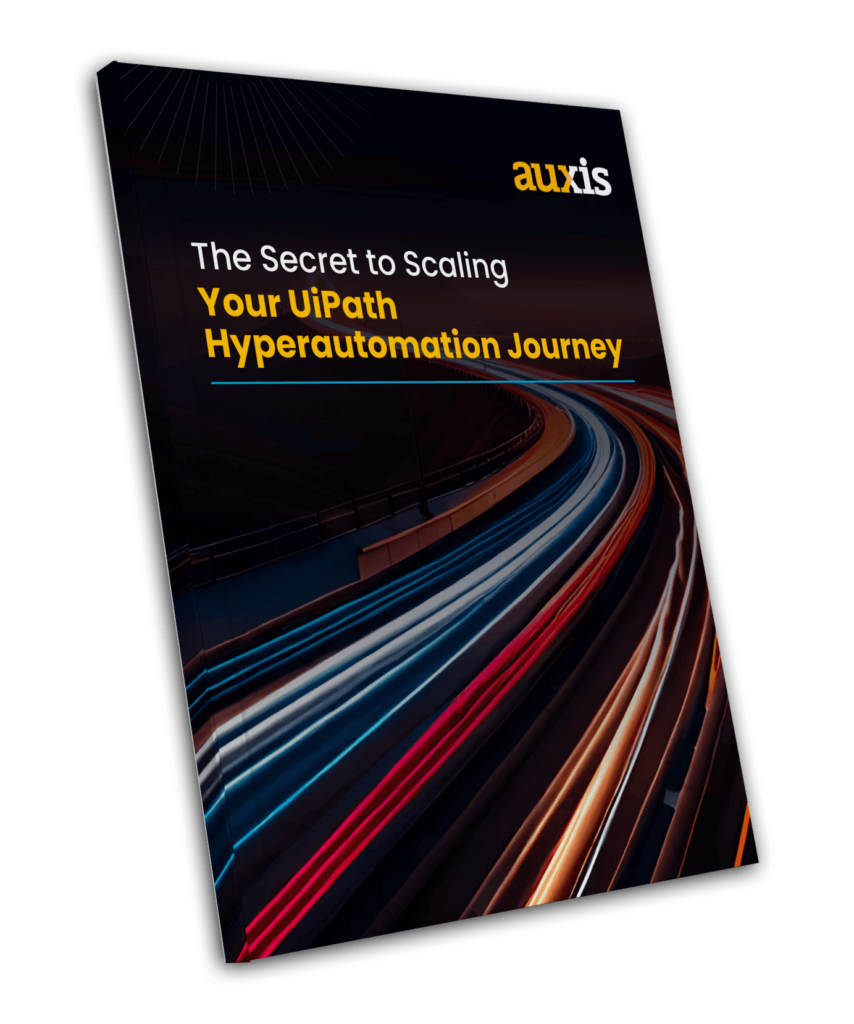Two powerful platforms dominate the exploding automation market: UiPath vs. Automation Anywhere. But despite soaring demand, many companies lack experience with Robotic Process Automation (RPA) – struggling to understand the benefits of one tool compared to another.
In the post-pandemic era, companies are scrambling to implement a technology that boosts resiliency, scalability, productivity, and timely access to actionable data while slashing operating costs. For enterprises with legacy technology, RPA enables digital transformation without the risk, expense, and prolonged implementation of ripping and replacing older platforms.
Top RPA providers continuously update their offerings and pricing models to serve the ever-evolving needs of their customers. But UiPath stands out as the clear market leader – commanding 27.1% of the market share, according to IDC’s 2020 market forecast.
With more than 8,500 customers, UiPath’s revenue surged 81% last year to $607.6 million – exceeding the growth rate of the overall RPA market. In April, it achieved the third-biggest software IPO in history, with stock soaring 23% during its debut.
UiPath is also consistently ranked as the #1 platform by respected organizations like Everest Group, Gartner, and Forrester. Most recently, Forrester Wave: Robotic Process Automation, Q1 2021 awarded UiPath the highest ranking in its Strategy, Market Presence, and Current Offering categories of all evaluated vendors:
.png)
Gartner also ranked UiPath as a Leader in its new 2021 Magic Quadrant for Robotic Process Automation, placing it significantly ahead of the competition in its Ability to Execute category for the third year in a row:
.png)
But Automation Anywhere maintains a respectable 19.4% of the RPA market, according to IDC, and it is also eyeing an IPO. In 2020, its revenue reportedly tripled to $312 million, surpassing 3,500 customers.
In this blog, we will dig into the difference between UiPath and Automation Anywhere to help you choose the best automation tool for your business. We will also provide our perspective on why UiPath has rightfully earned its place as the market leader.
The Secret to Scaling Your UiPath Hyperautomation Journey

UiPath vs. Automation Anywhere: Why UiPath leads the market
As the industry pioneer and creator of the term “Robotic Process Automation,” Blue Prism emerged as the first go-to solution for RPA in 2001. Most of its clients were large banking and financial institutions that could afford the technology’s initially high adoption costs.
But it didn’t take long for more affordable competitors like UiPath and Automation Anywhere to democratize RPA for any size company and seize control of the market – offering the same or better capabilities, increased flexibility, and easier implementation.
Based on 2018 performance, Gartner ranked UiPath as the market leader for the first time and placed Automation Anywhere at #2. They have dominated the market ever since.
Blue Prism currently maintains a distant third, with 10.3% market share, according to the IDC forecast.
But what propelled UiPath vs. Automation Anywhere to the top of the RPA market? The answer largely boils down to access.
As interest in RPA surged, UiPath gained traction and strong brand awareness by providing easy access to the emerging technology, while also offering more functionality at a lower cost.
UiPath lets companies explore RPA before making a financial commitment with a free community version and free training. Automation Anywhere initially required potential customers to go through its sales department to access a limited trial version of its tool. An activated account was needed to access training.
Before its recent revamp, Automation Anywhere also forced businesses to purchase more licenses and capabilities than UiPath to get started – a harder sell for a Proof of Concept because it significantly increased costs and complexity.
As UiPath’s open concept enabled businesses to experiment with RPA without a major out-of-pocket expense, more people gained expertise. As a result, an active community forum of experts grew rapidly that could be easily crowdsourced for guidance and knowledge sharing – easing adoption even more.
UiPath further supports users with a vibrant Marketplace that stands as the largest web library of pre-built RPA components. Designed to help companies speed development time without sacrificing content quality and security, it offers more than 1,300 certified, reusable listings that cover numerous industries and use cases. That includes native UiPath integrations with Microsoft, Salesforce, Workday, and more.
Usage reflects UiPath’s massive ecosystem, with more than 1 million users and 2.5 million downloads.
Drilling down the difference between UiPath and Automation Anywhere
After UiPath emerged as the market leader, Automation Anywhere rebuilt its product in 2019. Both RPA providers now offer a cloud-native, web-based, AI-infused platform with easy accessibility and comprehensive capabilities.
Automation Anywhere’s overhaul filled many functionality gaps that existed between the two platforms. It improved user experience and other features with robust cloud delivery, guided navigation, reusable AI and Machine Learning (ML) libraries, an intuitive analytics dashboard, and more.
Automation Anywhere’s strength stems from better reliability when confronted with unexpected changes to external applications, such as updated websites. UiPath bots are more likely to require adjustment from support teams in such situations.
Forrester notes that Automation Anywhere’s revamped product has “made strides” in openness with other technology solutions as well. But it adds: “Customers would like greater ease of use and easier exporting to third-party reporting tools.”
By comparison, Gartner highlights UiPath’s robust integration and partner ecosystem among the platform’s key strengths in its 2021 and 2020 Quadrants. UiPath enables seamless integration with more than 250 technology partners across almost all major enterprise products and applications.
In fact, Forrester ranked Microsoft’s newer Power Automate platform ahead of Automation Anywhere in its Market Strategy category, dropping Automation Anywhere to third. Gartner’s 2021 Quadrant further criticized Automation Anywhere’s intelligent document processing, stating “accurately extracting data from images remains a challenge.”
Gartner said upgrading Automation Anywhere’s legacy platform to its revamped product remains challenging for many customers as well.
UiPath stands at the forefront of innovation
UiPath shines as the leading product on the market built to support the full automation lifecycle, from discovery to measurement. It is a leader in RPA innovation – trailblazing new capabilities for cloud, embedded analytics, attended bots, c/itizen development, and more.
True to form, UiPath recently became the first company of scale to leverage AI-powered automation discovery. The new Task Mining solution uses advanced ML models to pinpoint frequent task patterns and identify repetitive activities that could be automated without interrupting employees’ work.
Advanced process mining tools are also now integrated with UiPath’s Automation Hub, helping users identify and implement automations that create instant operational improvements.
UiPath’s already strong AI capabilities are increasing rapidly, offering its own AI Center as well as the ability to integrate AI from different sources. UiPath’s functionality expands beyond predictive analysis in RPA solutions to expand the reach of automations with capabilities like Chatbots and AI Computer Vision that lets bots see on-screen elements with human-like recognition.
Other recent releases continue to strengthen UiPath’s leadership in the march toward enterprise-wide hyperautomation. New capabilities include:
- Long Running Workflows that facilitate seamless interaction between humans and unattended bots when human judgment is required.
- Out-of-the-box, drag-and-drop Machine Learning models that can be consumed by any size organization.
- Document Understanding that combines RPA and AI to help organizations extract and interpret data from different documents and ensure end-to-end processing.
- A new version of UiPath Apps that enables companies to build user-friendly applications that interact with attended and unattended bots in the background.
- A new version of UiPath Assistant that allows an RPA Center of Excellence to effortlessly deploy automation to different user groups and track utilization and productivity gains from all attended users.
- Automation scheduling eliminates human involvement.
- A Picture-in-Picture mode that lets employees continue other work on a machine running an automation process that requires user interface.
- Automation Ops, a cloud-first application that enables admins to quickly set up policies for automation users and developers.
In its #1 ranking of UiPath, Forrester praises the platform: “This RPA Leader has invested heavily in expanding its range of products to maximize the value that automation brings its customers.” Gartner’s 2021 Quadrant touts UiPath’s “rich governance features, a citizen-developer-friendly UX, enhanced computer vision and cloud-orchestrated RPA as a service.”
Some areas require tweaking. Gartner notes that recent enhancements to UiPath’s product offerings made its pricing model complex. However, it noted the vendor has launched simplified starter packs and is piloting consumption-based pricing options.
Gartner also stated some customers could benefit from the addition of a web-based RPA development environment. However, it noted that UiPath offers strong cloud orchestration capabilities and plans to release a web-based developer soon.
UiPath vs. Automation Anywhere: The verdict is in
Of course, don’t just take our word for assessing the difference between UiPath and Automation Anywhere. A solid source for RPA tools comparison is G2, with rankings based on real-time data from verified user reviews.
As of 7/27/21, UiPath rated 4.6/5 stars with 5,307 reviews and Automation Anywhere earned 4.5/5 stars with 4,911 reviews. Reviewers found that UiPath was easier to use, set up, and administer; met the needs of their business better; and preferred the direction of UiPath’s feature updates and roadmaps.
Gartner’s Peer Insights also rank UiPath ahead of Automation Anywhere, with 92% of users citing a willingness to recommend UiPath vs. 86% for Automation Anywhere.
There is no one-size-fits-all approach to automation. But from product innovations to ease of adoption and use, UiPath forges the best path forward on the journey to hyperautomation.




